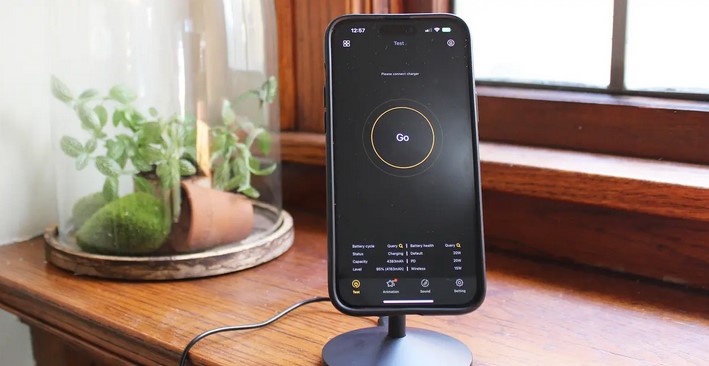
In recent years, the introduction of wireless charging smartphones has sparked a technological revolution, promising a future where tangled cables and charging ports are things of the past. The convenience of wire-free charging has caught the attention of both consumers and manufacturers, with many tech giants incorporating wireless charging into their flagship devices. But while the idea of a fully wireless charging ecosystem is alluring, the question remains: Are wireless charging smartphones really the future of mobile power? This article takes a closer look at the pros and cons of wireless charging and examines whether it can truly replace traditional wired charging methods in the long run.
The Rise of Wireless Charging Technology
The concept of wireless charging is not new. In fact, it has been around for over a century, originally conceptualized by Nikola Tesla in the 1890s. However, it wasn’t until the last decade that the technology matured enough to be incorporated into consumer devices like smartphones. Wireless charging works on the principle of inductive charging, where an electromagnetic field transfers energy between two coils – one in the charging pad and one in the device itself. This transfer of power allows smartphones to charge without the need for a physical connection.
Early Adoption and Consumer Reception
As smartphones evolved, so did the demand for convenience. In 2012, Nokia became one of the first major smartphone brands to introduce wireless charging on its Lumia series, using the Qi wireless standard. Soon after, companies like Samsung, Apple, and Google followed suit, integrating wireless charging into their devices. Today, wireless charging is a standard feature on many high-end smartphones.
The appeal of wireless charging smartphones lies in the promise of effortless charging. No more plugging in a cable every time your phone runs low on power; instead, users can simply place their phone on a charging pad or mat. This convenience has led to widespread adoption, especially in public spaces such as airports, cafes, and restaurants, where charging stations are becoming more common.
However, while consumer reception has been generally positive, it’s not without its limitations. The technology, although promising, is still in its early stages of development, and there are several factors that may hinder its widespread adoption as the primary method of charging mobile devices.
Advantages of Wireless Charging
1. Convenience and Ease of Use
The most obvious advantage of wireless charging is its convenience. The process is incredibly simple: you place your smartphone on a charging pad, and it starts charging automatically. This eliminates the need to fumble with cables, especially in low-light conditions or when you’re in a hurry. For individuals who frequently use their phones for work or leisure, this convenience cannot be overstated.
Wireless charging also reduces wear and tear on the physical charging port. Over time, charging ports on smartphones can become damaged due to frequent plugging and unplugging. Wireless charging smartphones eliminate this issue, offering a longer lifespan for the device and the charging port.
2. Reduced Cable Clutter
Another benefit of wireless charging is the reduction of cable clutter. Many people have a multitude of charging cables for different devices, leading to tangled messes and the need for multiple charging stations. Wireless charging pads offer a cleaner, more organized solution, allowing users to charge multiple devices simultaneously without the need for an array of cables. This is particularly useful in homes, offices, and public spaces.
3. Potential for Future Innovations
Wireless charging also opens the door for future innovations. For instance, researchers are working on long-range wireless charging systems, which could charge smartphones from several feet away. While these systems are still in the experimental stage, they represent the potential for a future where users can charge their devices simply by being in range of a charging station, without needing to physically place their phones on a pad.
Challenges and Limitations of Wireless Charging
Despite the numerous advantages, there are several challenges and limitations that wireless charging smartphones face before they can become the dominant form of mobile power.
1. Slower Charging Speeds
One of the biggest drawbacks of wireless charging is that it is generally slower than wired charging. While wired chargers can provide high power output and charge a device quickly, wireless charging tends to be slower because of energy losses during the transfer process. Although some manufacturers are working on fast-charging wireless technologies, the speed still lags behind traditional wired chargers.
For users who need their phones to charge quickly, such as when they’re in a rush, wireless charging can be a frustrating experience. However, this issue may diminish over time as technology improves and faster wireless charging standards are developed.
2. Limited Range and Placement Issues
Currently, wireless charging requires the smartphone to be placed in direct contact with the charging pad. This limitation makes it less flexible than wired charging, where users can plug in their phones from a distance and continue using them. Wireless charging also typically requires the device to be aligned in a specific way to ensure that the charging coils are properly aligned, adding a layer of inconvenience.
While research into longer-range wireless charging is underway, it’s unlikely that this will become commonplace in the near future. For now, users must place their devices on a pad and may not be able to use their phones effectively while charging.
3. Compatibility and Infrastructure Issues
Not all smartphones are compatible with wireless charging. Even among those that are, different manufacturers may use different standards (such as Qi or PMA), leading to compatibility issues. While Qi has become the industry standard, some smartphones still don’t support wireless charging, meaning that users must rely on traditional charging methods.
Moreover, widespread adoption of wireless charging requires the installation of charging pads in homes, offices, and public spaces. While some businesses and public areas have embraced the technology, it’s still not as ubiquitous as traditional charging stations. The infrastructure for wireless charging is still in its infancy, and until it becomes more widely available, wired charging will continue to dominate.
Are Wireless Charging Smartphones the Future?
The question remains: Are wireless charging smartphones really the future of mobile power? While wireless charging offers undeniable convenience and numerous advantages, it is still not a perfect solution. The slower charging speeds, limited range, and compatibility issues present barriers to its widespread adoption. Furthermore, the infrastructure required to make wireless charging ubiquitous is still lacking.
That said, wireless charging smartphones have the potential to evolve significantly in the coming years. As charging speeds increase and long-range wireless charging becomes more viable, it’s possible that wireless charging could replace traditional wired charging altogether. For now, however, wireless charging remains an attractive convenience for users who prioritize ease of use over speed.
In conclusion, while wireless charging smartphones are undoubtedly a step forward in mobile power, they are not yet poised to fully replace wired charging. However, as the technology continues to improve and overcome its current limitations, wireless charging could very well become the dominant method of mobile power in the future. For now, the best approach for most users is to embrace both wired and wireless charging solutions, taking advantage of the strengths of each depending on the situation.
